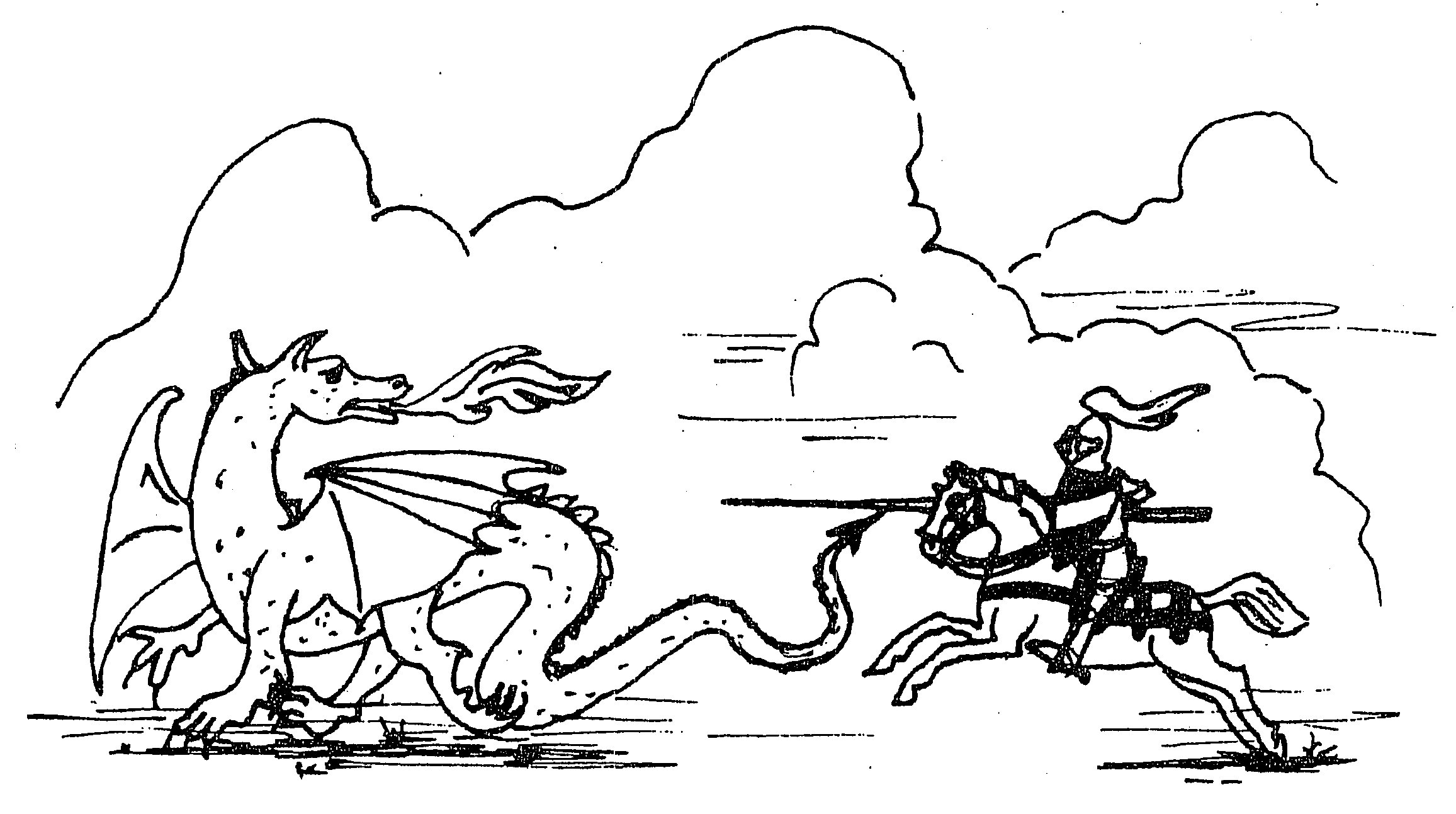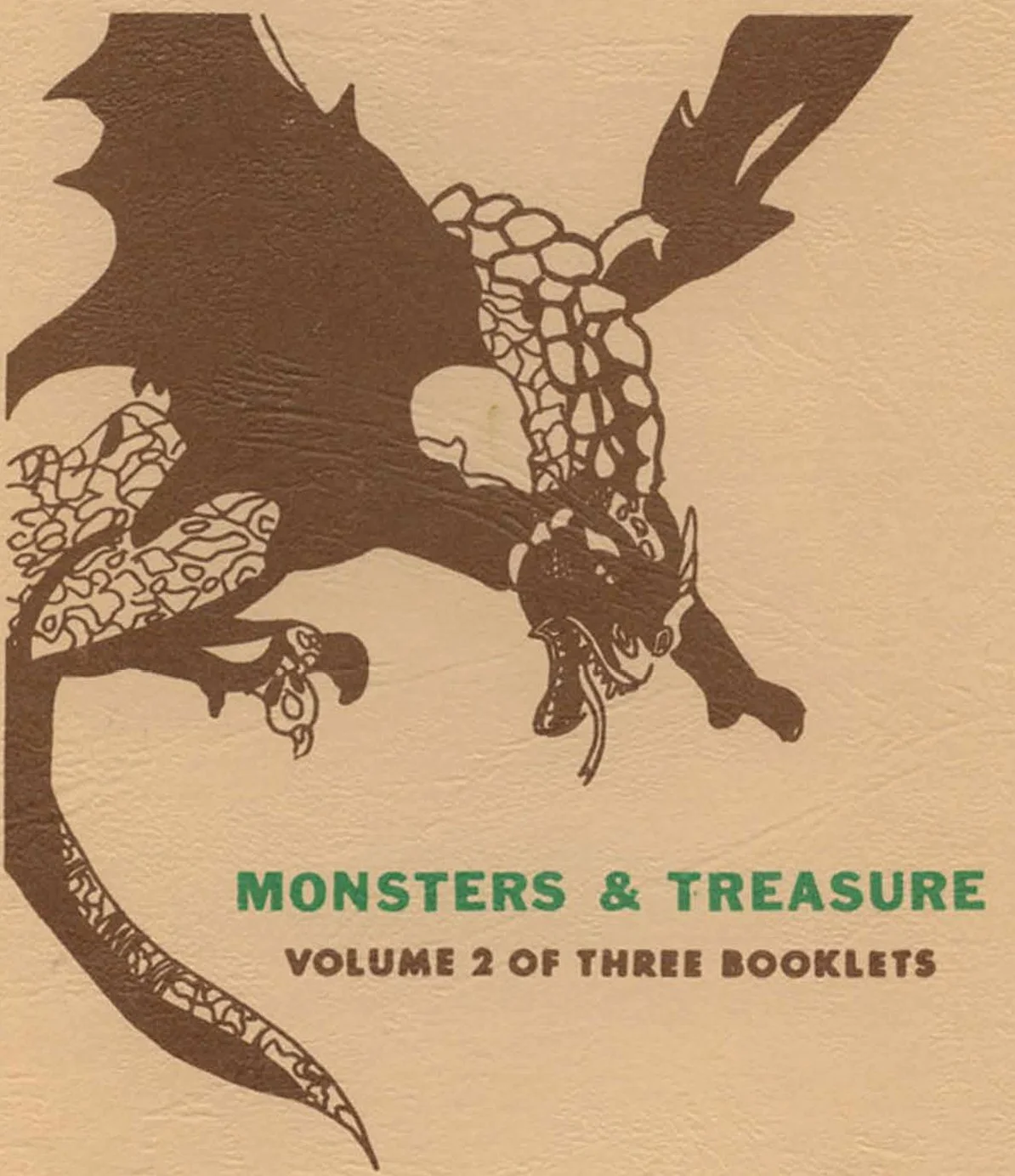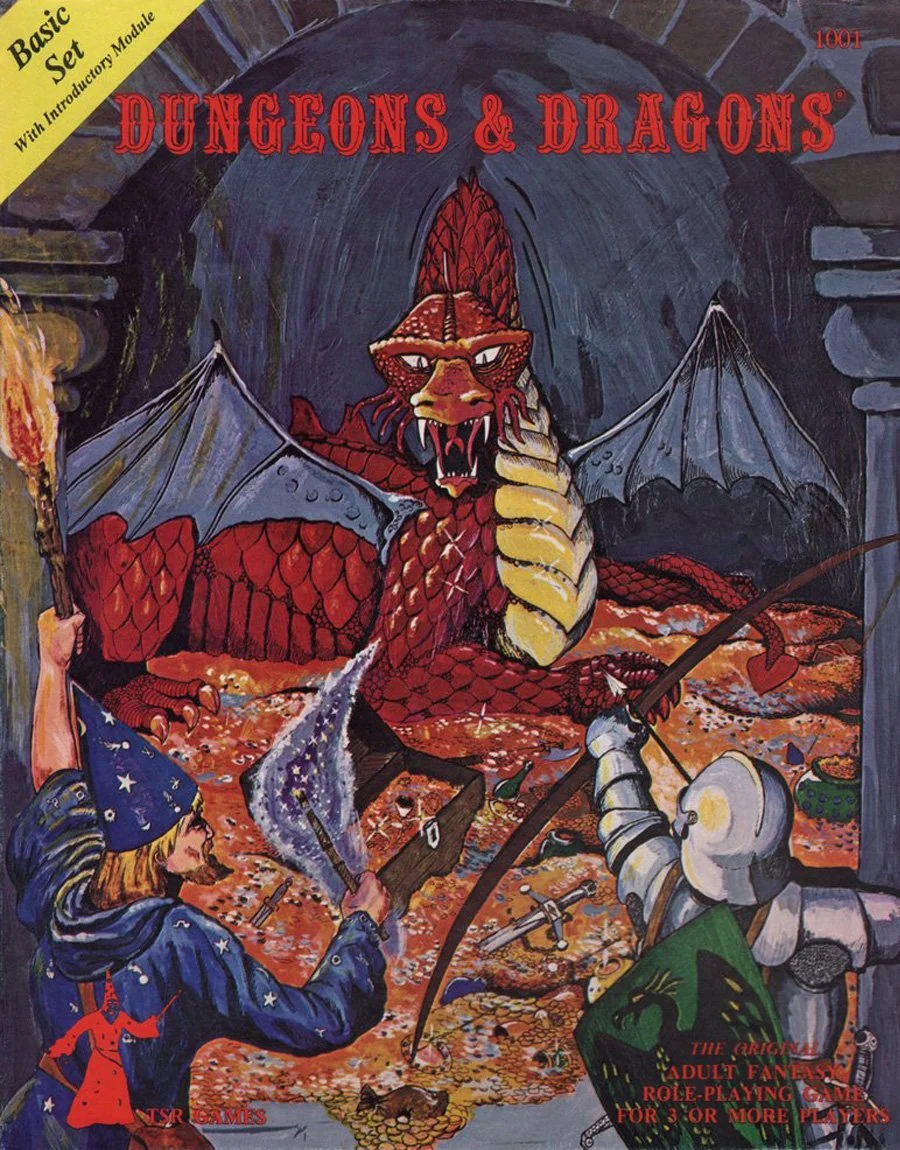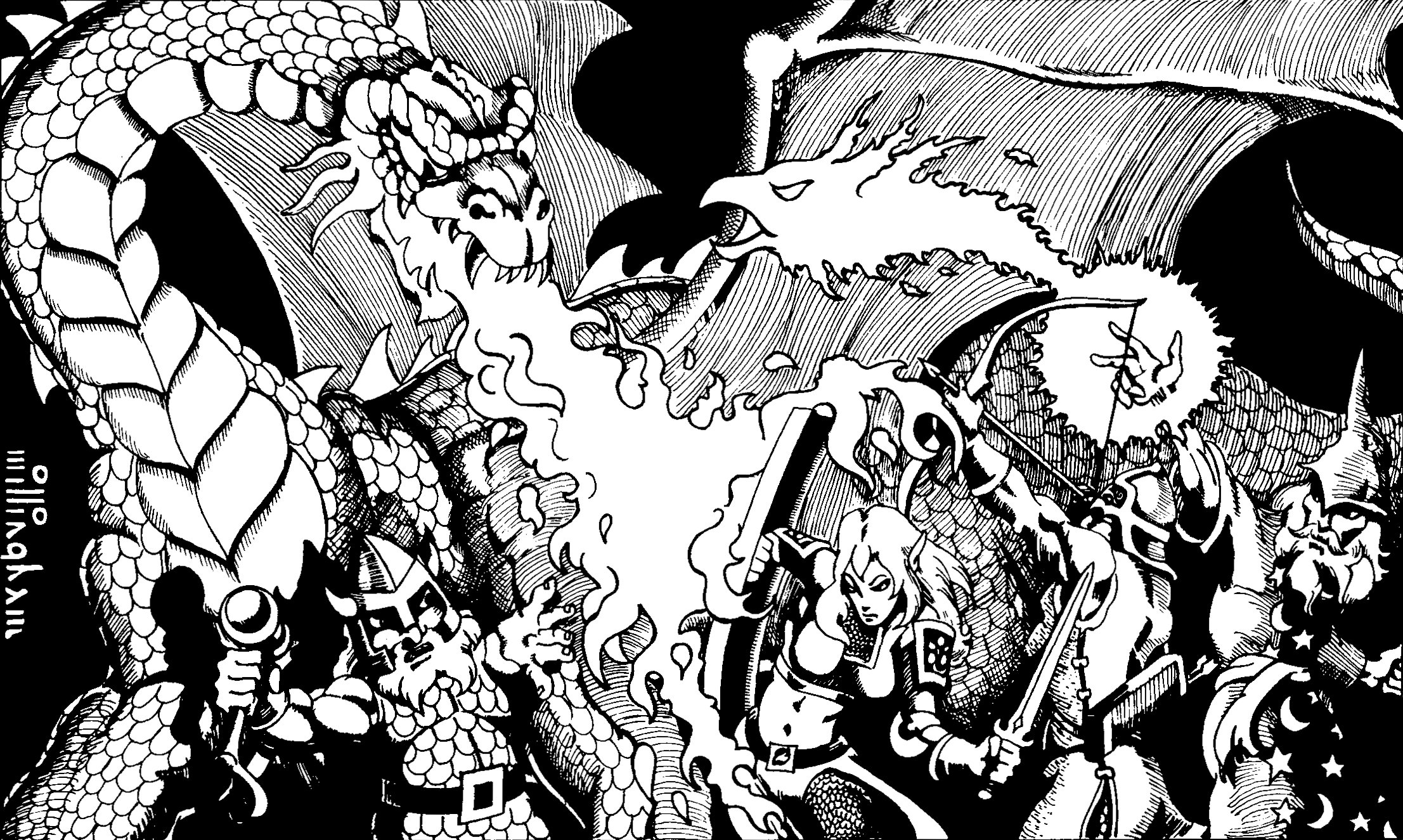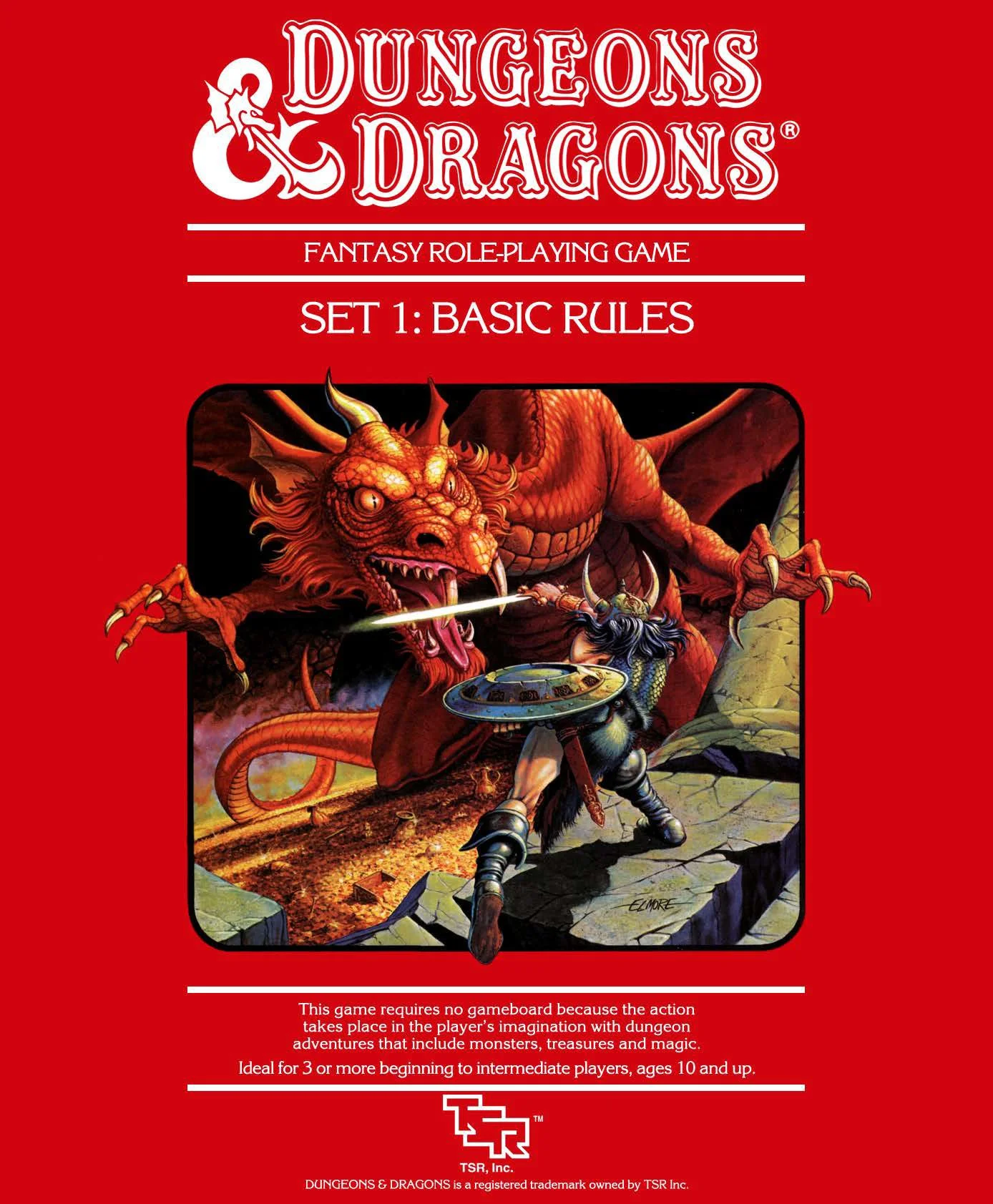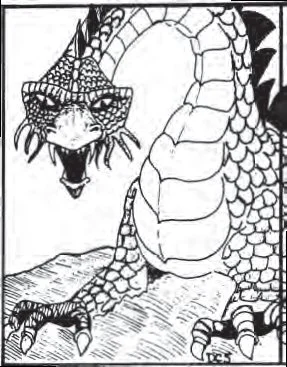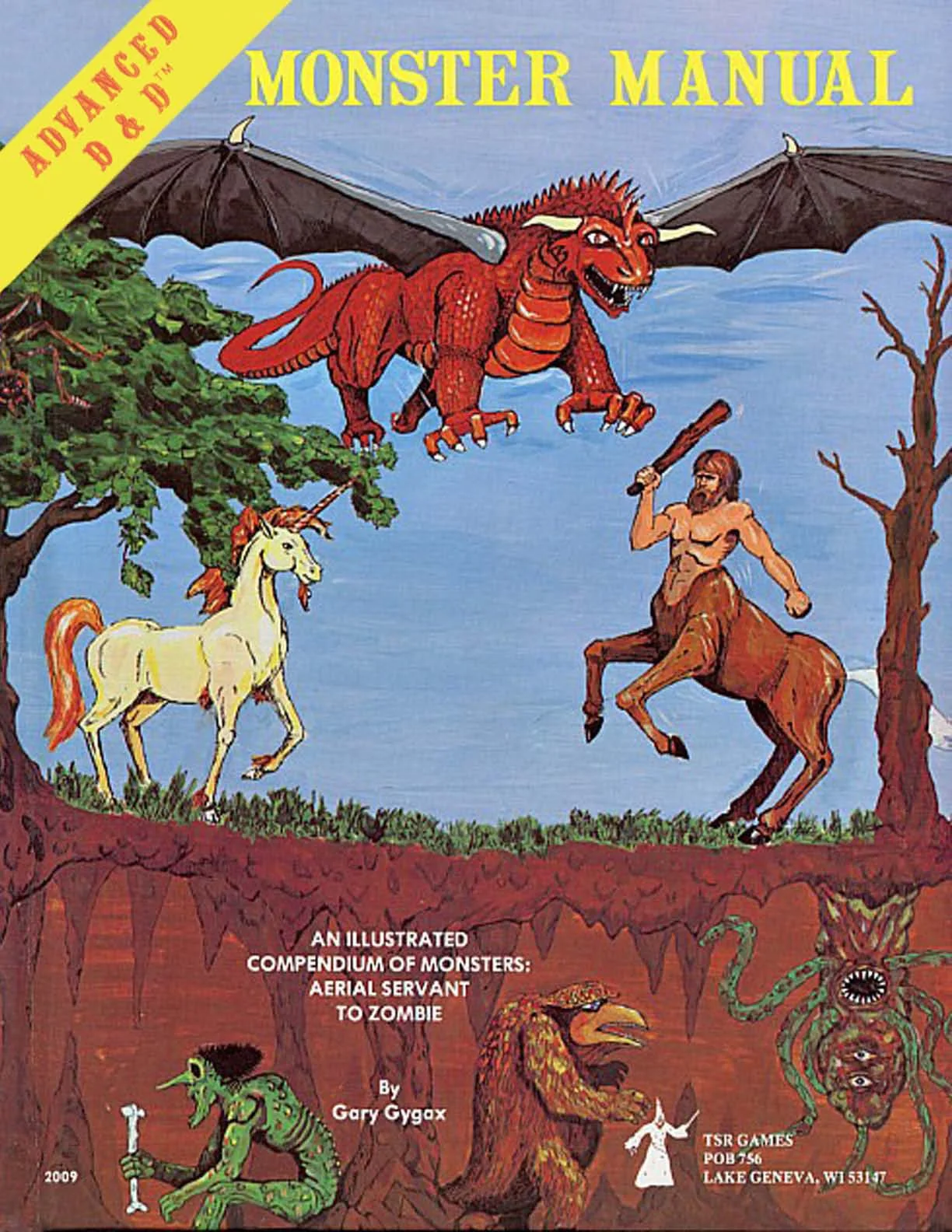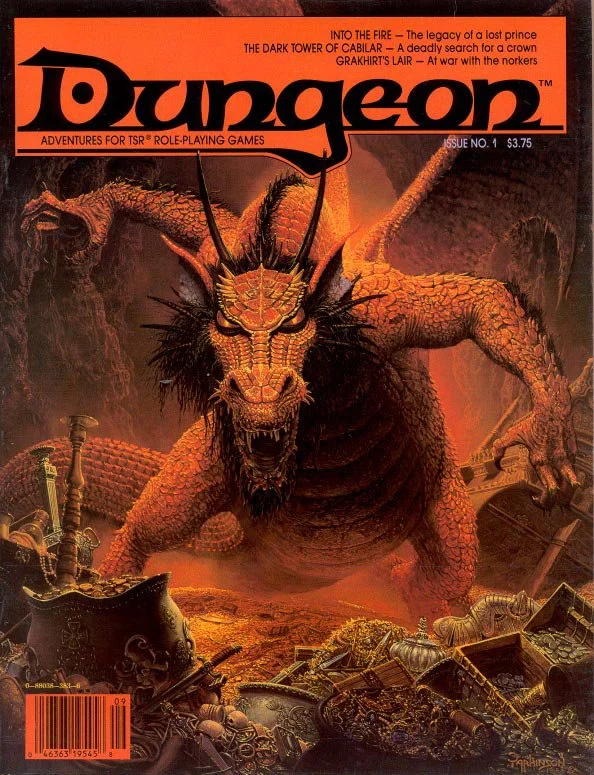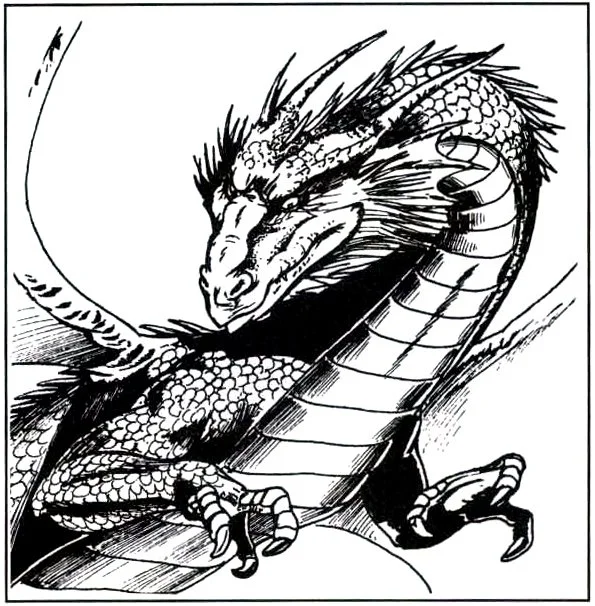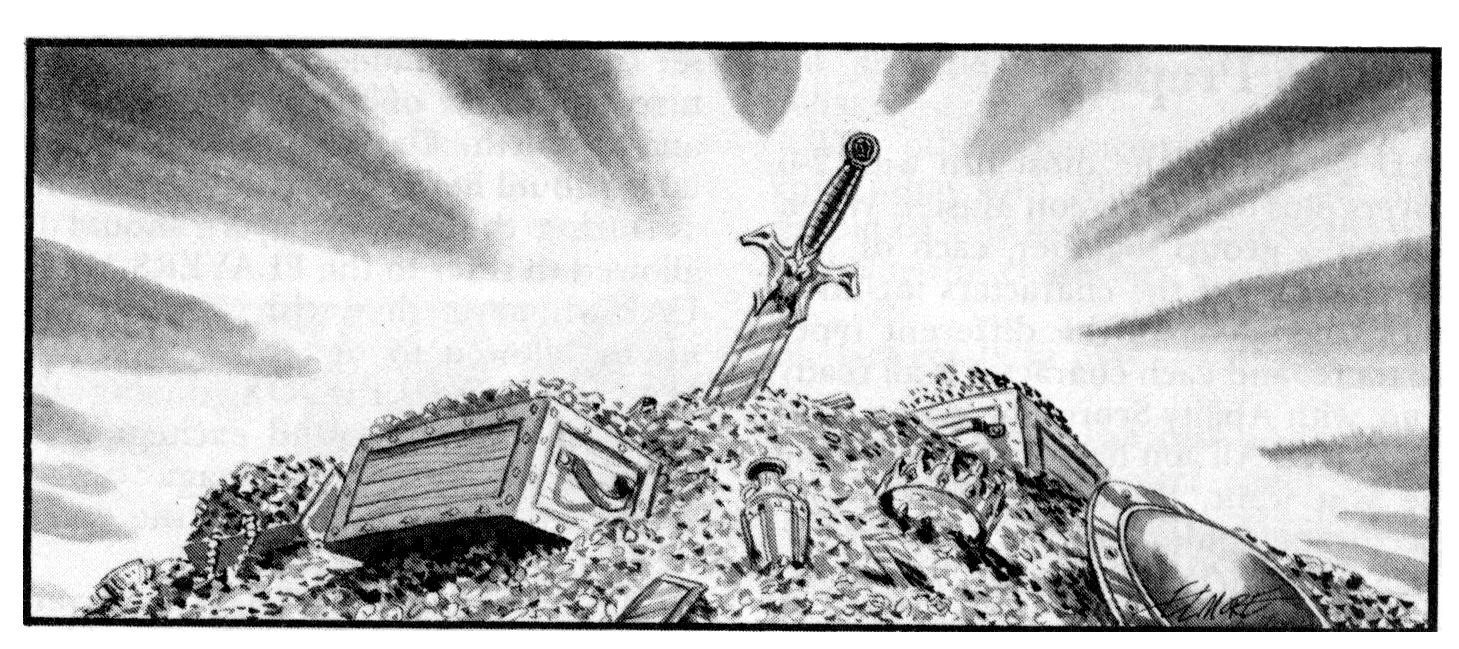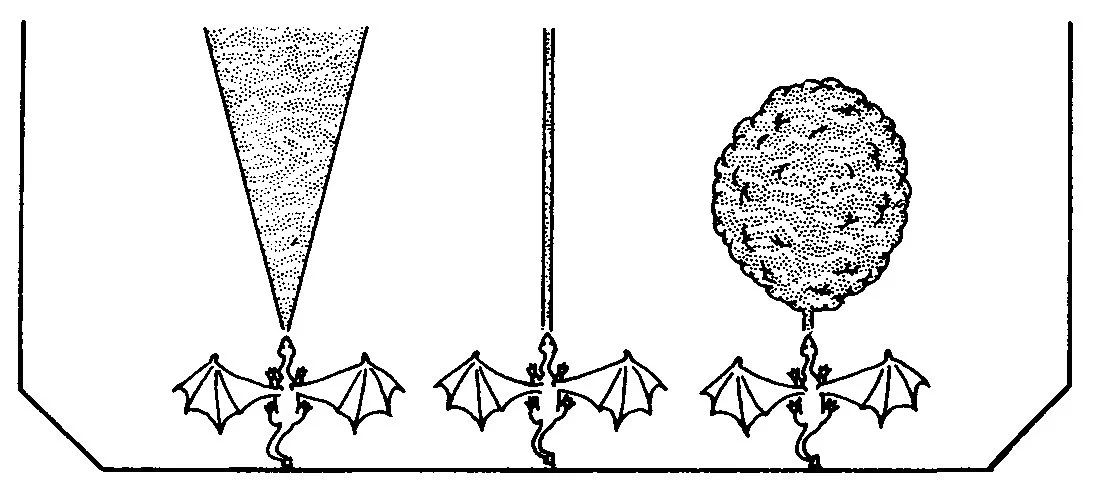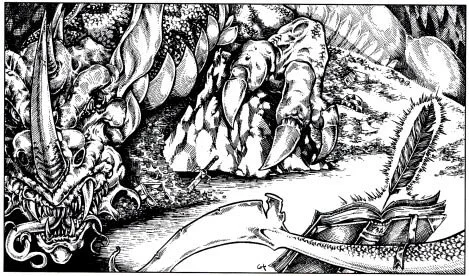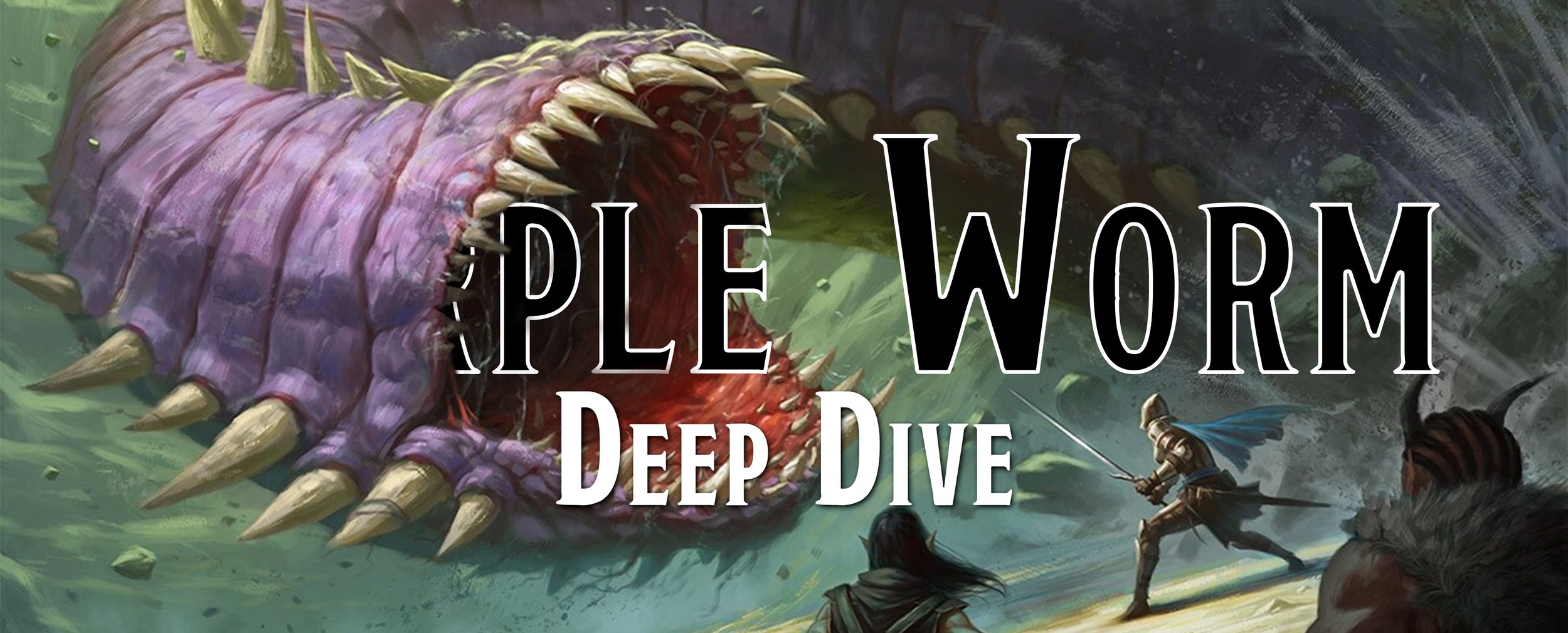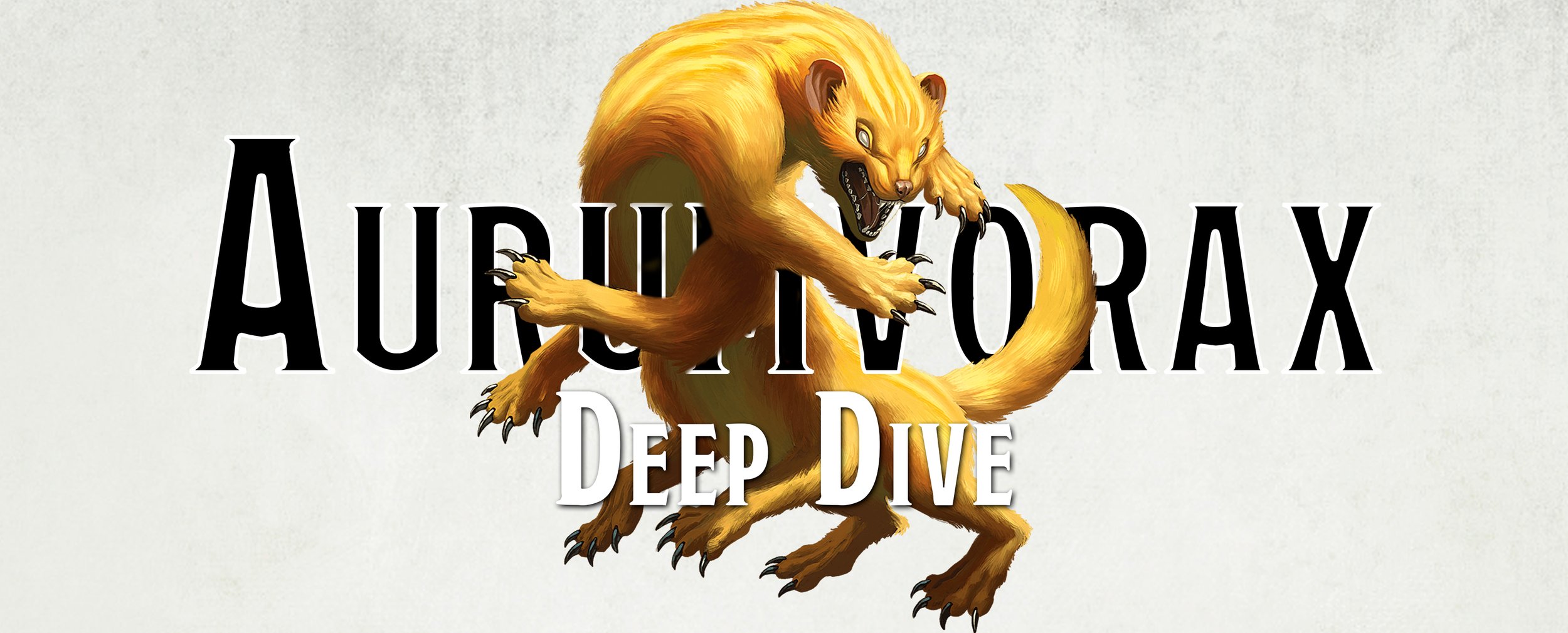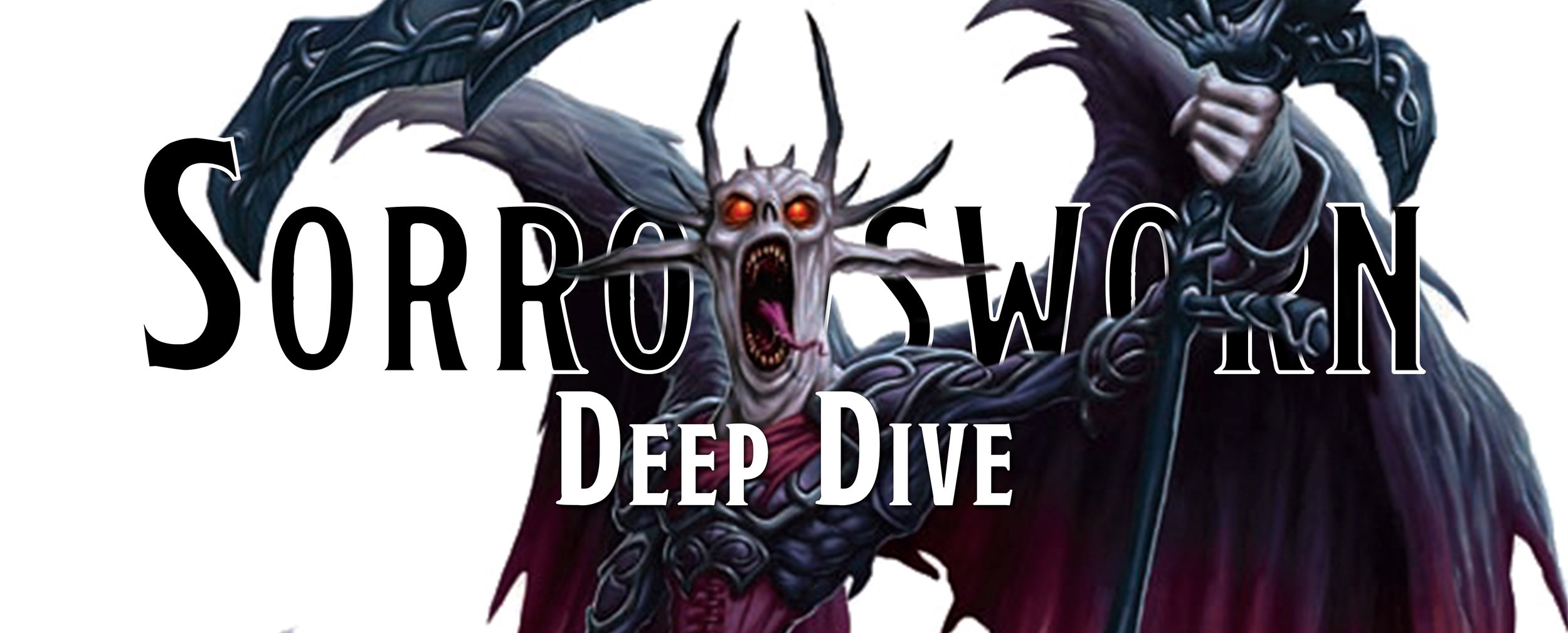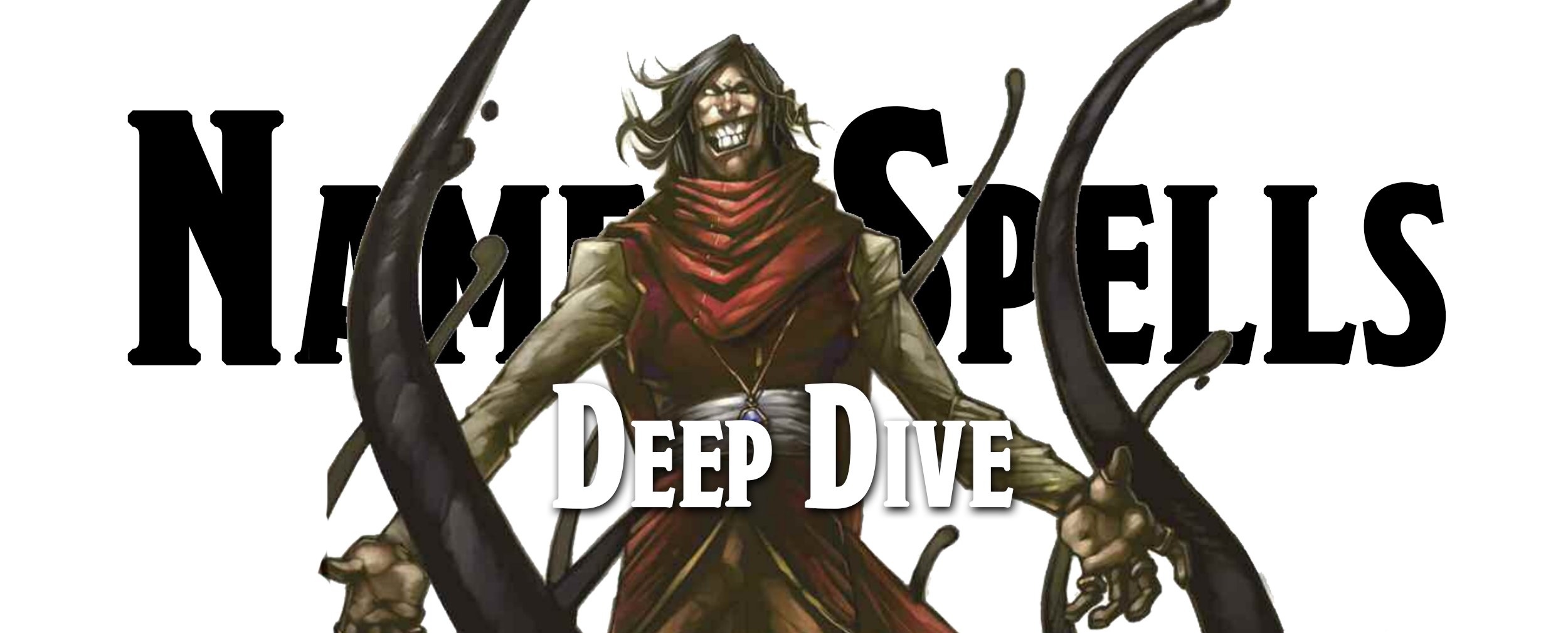Deep Dive - The Red Dragon Pt. 1
It's long overdue, but we’re finally talking about dragons. One of the mightiest dragons in the early editions, the Red Dragon was second only to the Gold Dragon (but not in our hearts and never to their face).
This great fire-breathing garnet behemoth of a lizard is responsible for the pain of millions, breathing devastation across the landscape, turning land to ash, and causing blistering infernos to envelop the world. But why? Why are Red Dragons so interested in destruction? Why won’t they share their hoard? And how much can you make subduing and selling a Red Dragon? Let’s fly into the first part of the Red Dragon.
OD&D - Red Dragon
No. Appearing: 1-4
Armor Class: 2
Move: 9/24
Hit Dice: 9-11
% in Lair: 60%
No. of Attacks: 1
Attack/Damage: 2 claw/1 bite, 3-30/bite
Breath Weapon: Fire
Range/Shape: 9” X 3” cone
Talking/Sleeping: 85%/20%
Treasure: H
Chainmail, 1971 TSR Inc / Wizards of the Coast / Don Lowry
The first appearance of the Red Dragon is in the Dungeons & Dragons predecessor, Chainmail (1971) where it is the only dragon talked about because of the fame it gained in The Hobbit (1937) by J. R. R. Tolkien. It lets us know that dragons can see in darkness, they can detect invisible creatures, and that dragon fire kills anyone it touches, except for another dragon, a superhero, or a wizard, who all get saves (and if they fail, they die anyway).
Luckily for the great armies being swathed in fire, a Red Dragon only gets to breathe fire three times before it must land and remain stationary for one turn, at the end of which its internal fires are rekindled, and it can fly up and breathe fire three more times. Hopefully, your troops can swarm the dragon at this time and kill it, but probably not.
Another lucky fact is that dragons are egotistical and evil, so they automatically attack fantastic creatures in this order and refuse to deviate: Dragons, giants, balrogs, rocs, (true) trolls, elementals, etc. Also, if you happen to have a frost giant or roc on your side, well, not anymore because the dragon will attack them regardless of what side the creature is on.
The source material goes on to explain that other colored dragons exist, like blue, white, and even purple dragons (but those are flightless worms). It also lets us know that basilisk and cockatrices should also be included as dragons, so that’s canon now for our games.
Dungeons & Dragons Box Set - Book 2: Monsters & Treasures, 1973 TSR Inc / Wizards of the Coast /
The Red Dragon makes its first appearance in Dungeons & Dragons in the Dungeons & Dragons Box Set - Book 2: Monsters & Treasures (1973). Compared to most of the creatures found within these pages, there is a wealth of information about dragons, though a lot of it is confusing or strange. We’ll get into that.
As is only proper, Red Dragons are one of the strongest dragons—however, gold dragons are the most powerful. You can find them most often in the mountains or hills, and may even have a family of Very Young Red Dragons. We recommend you don’t attack a Red Dragon family, as this will enrage the dragons and their attack value. Their chance to hit your very fragile adventurer will double and lead to them constantly using their breath weapons.
Speaking of breath weapons, let’s talk about a dragon’s hit points. A Red Dragon has a 9 to 11 hit dice, though 60% of them will have 10, and 20% for 9 or 11. If you have 9 hit dice, the dragon is considered a small dragon, while 11 hit dice are considered very large for their species. This is important to know because when you determine a dragon’s hit points, that is how much damage the dragon deals with its breath weapon—though don’t roll. Instead, you will roll a single d6 to determine the dragon’s age. Based on the age of the dragon, 1 being very young and 6 being very old, that will determine what you should multiply their hit die by. For example, if you roll a d6, on a result of 5 you have an Old Red Dragon, and so you will multiply its hit dice by 5 for a total of 50 hit points for a typical dragon and deals 50 damage with its breath weapon.
If you want to cheap-shot a dragon, and maybe learned a thing or two from a hobbit thief, wait till the dragon is asleep. If you encounter a sleeping Red Dragon, you get a free attack with a +2 bonus to the attack. We do have to warn you that you should never wake a sleeping dragon.
If you thought that breath weapons and teeth and claws were all you had to worry about, some dragons are capable of casting spells. It isn’t likely, at the very least, but it has been known to happen. This requires the dragon to be able to talk, which 85% of all Red Dragons can, only 25% of white dragons can, and then only 15% of talking Red Dragons can cast 1st- to 3rd-level spells.
Killing a Red Dragon may not be your best option, but sometimes you have no choice if you want your character to live until the next adventure. Luckily, you can decide to subdue a dragon, and to be honest, it seems a lot easier than killing one. When you want to subdue a dragon, every time you hit it, you count any damage as subduing points. At the end of every round, the GM determines what percentage of the dragon’s hit points the party dealt in total subduing points. The GM then rolls a d100, and if their result is equal to or less than the percentage of subduing points dealt, the dragon is subdued.
Basically, if a dragon has 50 hit points, you deal 20 subduing points to it. You have effectively dealt 40% of its hit points. You then roll a d100, and if you roll 40 or lower, it’s subdued. If you roll higher, it is still breathing fire on your face.
This does come with the odd effect that it is easier to subdue a dragon than it is to kill it. While subdual damage does not reduce a dragon’s hit points, it doesn’t matter since the GM may roll low on the d100, and you’ll subdue it faster than if you had to deal all the hit point damage. Plus, when you subdue a dragon, you are about to make a lot of money, and not just from the dragon’s treasure hoard.
You can sell subdued creatures, especially dragons, on the open market. For every hit point that the dragon has, someone is willing to purchase the subdued dragon for 500 to 1,000 gp, so for an Old Red Dragon with 50 hit points, you could earn 25,000 to 50,000 gp! However, do be wary, as the dragon will only stay subdued as long as you are in a position of strength over it. When it has an opportunity, it will attempt to escape and kill you, which probably means launching a burning cone of fire that melts flesh and chars bone.
Basic D&D - Red Dragon (Moldvay)
Armor Class: -1
Hit Dice: 10**
Move: 90’ (30’)
Attacks: 2 claws/1 bite each, plus breath weapon.
Damage: 1-8/1-8/4-32
No. Appearing: 1-4 (1-4)
Save as: Fighter: 10
Morale: 10
Treasure Type: H
Alignment: Chaotic
Holmes Basic Set, 1977 TSR Inc / Wizards of the Coast / David C. Sutherland III
The Red Dragon appears in the Holmes Basic Set (1977), Moldvay Basic Box Set (1981), and Mentzer Basic Rules Box Set (1983). While much of this information is stuff we’ve already gone over, there are a few interesting tidbits sprinkled in this edition, as well as some much-needed clarification and revisions to the rules of dragons, their breath weapons, and how to seduce–we mean subdue–dragons.
The Holmes set is quite basic, simply providing what we already learned, but added that Red Dragons are chaotic evil, which shouldn’t surprise anyone. In addition, we learn about a dragon’s hoard, though not very many specifics, and that the size of the hoard is based on how old the dragon is. So if you kill a baby dragon, don’t expect more than a few coppers, but a very old dragon will have gold and gems flowing freely like elven wine on Arborea.
In the Moldvay set, we learn that dragons are an old race of winged lizards. We aren’t sure a dragon would like being called a lizard, but Moldvay is braver than we are. This edition provides very helpful clarifications, like a dragon can only use its breath weapon three times (instead of saying, but three times a day!). It also lets us know that the breath weapon is tied to the dragon’s current hit points, not the maximum. That means if you reduce a dragon from 60 hit points to 20, it’ll only deal 20 damage with its breath weapon, not the full 60—a very good reason why Game Masters should use their breath weapon immediately, not keep any in reserve.
Moldvay Basic Box Set, 1981 TSR Inc / Wizards of the Coast / Bill Willingham
In addition, subduing a dragon just got a lot harder. No more is the GM rolling a percentage die, but now you have to deal an amount of ‘subdual damage’ to the dragon to equal its full hit points… however, you aren’t dealing damage. Those who are wary of being hit by a fully-charged breath weapon see the danger here. If you deal hit point damage, you reduce the power of its breath weapon. If you try to capture it by subduing it, you aren’t reducing the power of its breath weapon and you probably aren’t going to survive for very long.
Mentzer Basic Rules Box Set, 1983 TSR Inc / Wizards of the Coast / Larry Elmore
Up next, a Red Dragon may try to talk to you or capture you, but it will most likely eat you. After all, they are meat eaters. That is unless you shower them with praise, as the Red Dragon’s ego may make them reconsider. We recommend giving it a try since swallowing your pride is better than being swallowed by a Red Dragon.
Finally, there is the Mentzer set for the Red Dragon. Thankfully for us, there are no changes to Molday’s incarnation of the Red Dragon. We say thankfully because we have five more editions to go.
1e - Red Dragon
Frequency: Rare
No. Appearing: 1-4
Armor Class: -1
Move: 9”/24”
Hit Dice: 9-11
% in Lair: 60%
Treasure Type: H,S,T
No. of Attacks: 3
Damage/Attack: 1-8/-8/3-30
Special Attacks: Breath weapon + possible magic use
Special Defenses: Nil
Magic Resistance: Standard
Intelligence: Exceptional
Alignment: Chaotic evil
Size: L (48’ long)
Psionic Ability: Nil
Chance Of: Speaking:75%, Magic Use: 40%, Sleeping: 20%
Monster Manual, 1977 TSR Inc / Wizards of the Coast / David C. Sutherland III
The Red Dragon appears in the Monster Manual (1977), along with 14 other dragons, including the dragon turtle. Before we start on the Red Dragon, we’d be remiss if we didn’t talk about the changes to dragons in general. They are no longer referred to as winged lizards, which we’re sure was the result of Big Dragon Lobby.
All dragons can now see in the dark and have a super sniffer for a nose, sharp eyes, and excellent hearing. With their heightened sense, you aren’t safe if you’re invisible or have tried to hide something from them. In addition, they gain a new, terrifying and frightful trait.
An adult dragon has an aura that causes a fear reaction when flying above you or running at you and your friends. We don’t know about you, but we’d be terrified if we saw a Red Dragon bearing down upon us. Your hero can have a variety of reactions based on the number of hit dice they have. Lower-level characters may flee or be paralyzed, while the higher-level characters may attack at a disadvantage, or be immune to the effect altogether.
Monster Manual, 1977 TSR Inc / Wizards of the Coast / David C. Sutherland III
There’s still a lot of text regarding subduing a dragon. A subdued dragon can be sold, though now they only fetch between 100 and 800 gold pieces per hit point. How much gold you’ll get is determined randomly. This seems strange as you’d think an older dragon would mean a higher price, but what do we know? The other pain is that the old percentage subdual rules are back, so it’s going to get a full-hit point breath weapon attack on you, but you’ll pry subdue it before you deal an amount of damage equal to its full hit points.
The last thing we want to talk about for dragons, in general, is that the sourcebook calls them cowards. Before any dragon comes after us, we’d like to point out we didn’t write that, and we are just as upset as dragons are about this. The text goes on to state that because dragons are so cowardly, that is why you can subdue them so easily (tell that to all the knights who died so you could get a payday), and that you can disarm any dragon with a bit of flattery.
Now, despite the writers obviously having a shallow opinion of dragons, let’s get into Red Dragons and why you should wear brown pants when fighting them.
Red Dragons are some of the most greedy dragons you can encounter, and that isn’t an insult to them, but a compliment. Of course, this is a major weakness, as their lust for gold may allow them to be manipulated. A persuasive individual can promise the Red Dragon gold, gems, and other riches, which may override their desire to kill you. Be convincing cause a lied-to Red Dragon is going to be a fiery Red Dragon when it finds out you lied to it.
The last bit of new Red Dragon information isn’t that new, but the statistics are. Red Dragons now have a 75% chance of being able to speak, and if they can talk, they have a 40% chance of being a spellcaster. Very young and young Red Dragons have only 1st-level spells, while sub-adult and young adult dragons have up to 2nd-level spells. The oldest of Red Dragons, however, will be able to cast up to 4th-level spells, which seems like a bad idea for adventurers to fight. While Red Dragons only have three breath weapons a day, they could have an extra three fireball spells to make up for it.
We are now going to have to jump into various sourcebooks across the edition, but before we can explore more, we just want to make sure you are aware that this isn’t an exhaustive look at every single Red Dragon out there. The only books we are going to look at are books that add something interesting, new, disruptive, or just provide something we feel like sharing. We are not sharing every bit of information or we would never finish this deep dive.
Dungeon #1, Sept/Oct 1986 TSR Inc / Wizards of the Coast / Keith Parkinson
With that said, we do want to mention that Dungeon #1 (Sept./October 1986) has you fighting an ancient Red Dragon known as Flame in the adventure Into the Fire by Keith Parkinson. Not much here to see, since the adventure just revolves around you killing a Red Dragon, but it is pretty awesome that one of the first dungeons in the magazine is about a Red Dragon.
In H4: The Throne of Bloodstone (1988), we are introduced to the uber-powerful Fyrillicus, the Abyss-bred Red Dragon. Want to hear something crazy? This module is for character levels 80-100, so you know this isn’t going to be some run-of-the-mill Red Dragon. Our buddy Orcus bred Fyrillius from a Red Dragon he captured and brought to the Abyss, we guess we now know who those subdual rules are for after all.
Now, obviously, the Prince of Darkness wasn’t subduing a dragon because he was lonely and wanted a friend, instead, it was to create a powerful and unique dragon to guard his castle. Of course, any time you mess with nature and fool around with genetics, there are bound to be side effects. Fyrillius’ side effect is that he is not the sharpest tool in the shed, though, he still has spells so be careful what you say about him.
Up next, in Dragon #134 (June 1988) we are given a ton of stuff about dragons, especially the Red Dragon. In Give Dragons a Fighting Chance by Ed Friedlander, dragons of different types and colors are suggested by giving dragons specific additional spells, including spells specific to their color. This means all dragons could have spells such as haste and shield, and the Red Dragon would have burning hands, fireball, and other fire spells. Serpents and Sorcery by Vince Garcia takes the issue of dragon spells even further. Garcia gives the GM a very detailed list of spells for the Red Dragon. The spells range from 1st to 4th level and include affect normal fires, magic missile, flaming sphere, and dimension door to name a few.
Dragon #134, June 1988 TSR Inc / Wizards of the Coast / Ken Widing
The last one we want to touch on for this edition is Gregg Sharp's Ecology of the Red Dragon article in Dragon #134. In this article, we are provided information on the Red Dragon through a story where a group of adventurers are demanding answers from a sage, Nimodes. Nimodes explains all manner of information about Red Dragons, and warns the group it is a bad idea. The group goes ahead and decides that they would like to win the Red Dragon’s hoard. It probably doesn’t go well for them.
What we do find out is pretty interesting. Like lizards (obviously dragons aren’t lizards in case any dragon is reading this), dragons shed their skin as they age. You aren’t going to find massive skins lying about the place because they eat that skin, regaining important nutrients that they need to become a big and strong dragon that will conquer the world.
In addition, we learn that female Red Dragons are incredibly ferocious and more violent than their male counterparts. They especially love fighting other female Red Dragons and hate sharing space with anyone. After they mate, lady dragons are likely to kill the male dragon so that they no longer have to share a cave with them (and may end up eating a few of the dragon wyrmlings if it ends up she doesn’t like being a mother). To go along with that, a female Red Dragon has no interest in being bribed, but she does like flattery. However, flattery only gets you so far and you’ll pry be eaten soon.
The last thing we want to share is that Red Dragons have explosive poop. We don’t mean that they suffer from chronic diarrhea syndrome, but rather their poop is legitimately explosive because it has sulfur and potassium nitrate in it. Because Red Dragons are terrible and cruel, they’ll try and trick adventurers into digging up their poop, pry telling them that that is where their hoard is, and when a shovel strikes a rock and creates sparks, the entire poop pile explodes, dealing quite a bit of damage and maybe even killing a few adventurers.
Red Dragons use their poop bombs for evil, sometimes luring adventurers to stand over the organic bomb before breathing fire on the adventurers. This also sets off the poop explosion, showering everyone in burning offal and giving everyone a reason to never talk about that one time they tried to hunt down a Red Dragon but instead was given a shit shower.
2e - Red Dragon
Climate/Terrain: Tropical, sub-tropical, and temperate hills and mountains
Frequency: Very rare
Organization: Solitary or clan
Activity Cycle: Any
Diet: Special
Intelligence: Exceptional (15-16)
Treasure: Special
Alignment: Chaotic evil
No. Appearing: 1 (2-5)
Armor Class: -3 (base)
Movement: 9, Fl 30 (C), Jp 3
Hit Dice: 15 (base)
THAC0: 7 (at 9 HD)
No. of Attacks: 3 + special
Damage/Attack: 1-10/1-10/3-30 (3d10)
Special Attacks: Special
Special Defenses: Variable
Magic Resistance: Variable
Size: G (48’ base)
Morale: Fantastic (17-18)
XP Value: Variable
Monstrous Compendium Volume 1, 1989 TSR Inc / Wizards of the Coast / Jim Holloway
The Red Dragon is first found in the Monstrous Compendium Volume 1 (1989) and reprinted in the Monstrous Manual (1993). The general information for all dragons is much more expansive than the previous editions, as are the specific aspects of the Red Dragon. So, as we discuss our not-so-friendly friend, please know that some of their abilities are found in all dragons.
Dragons are now broken up into three categories: chromatic, gem, and metallic. The Red Dragons are chromatic dragons, and all dragons within this category are evil to the core. Because metallic dragons are goody-two-shoes dragons, metallic dragons, like the Red Dragon, want nothing to do with them. Unsurprisingly, Red Dragons will usually attack them on sight. In addition, they typically fight copper and silver dragons more often than other metallic dragons because copper and silver dragons live in the same biomes as Red Dragons (and maybe because Red Dragons are secretly scared of gold dragons).
If you ever wondered why they like to live in deep, dark underground lairs, besides needing cheap real estate for their hoard, it's cause adventurers and hunters are just mean. When born, a Red Dragon’s scales are shiny and bright red, making them easy to spot. Hunters want their dragon hides since you can sell them for up to ten thousand gold pieces. In addition, townsfolk may hire you and your friends to kill them because the townsfolk worry about their home prices and what being so close to a fire-breathing lizard might do to their insurance.
Monstrous Manual, 1993 TSR Inc / Wizards of the Coast / Mark Nelson
The next important thing to know about dragons is that they love to eat, preferably meat. The Red Dragon’s favorite dish is the fair maidens of any humanoid race. Sure, it’s a stereotype, but someone had to fill the role, so why not the Red Dragon? To get their food, a Red Dragon with the charm spell will lure maidens into their lair or even convince a nearby town’s leaders to give up any maidens living there.
Of course, don’t think that they only eat maidens. With a cast iron blast furnace of a stomach, a Red Dragon can eat almost anything it wants. If you are especially lucky and show up after the Red Dragon has finished their breakfast, a Red Dragon may not eat you. Instead, they’ll use their charm spell and force you to keep them apprised of what’s happening in their territory… or tell them where the tasty maidens are hiding.
Before we delve into what it’s like to die–err, fight–a dragon, we want to talk about the Red Dragon’s treasure hoard. Let’s be honest; it’s the only reason any sane person would even consider fighting a dragon.
At the adult stage, a Red Dragon is going to have a decent-sized hoard, which only gets bigger the older they get. Red Dragons live for their treasure. They will do pretty much anything to add to it, including killing you. They are fastidious bookkeepers, keeping track of everything in their hoard, down to the last copper piece. The bigger the hoard, the happier they are, and the more they will do to protect it. On the stat block, the Red Dragon’s treasure type is listed as special. As we stated before, the older they get, the more they have. As a point of reference, an elder wyrm Red Dragon will have over 60,000 gold pieces, along with potions, scrolls, and other magic items.
Mentzer Basic Rules Box Set, 1983 TSR Inc / Wizards of the Coast / Larry Elmore
Now that you’ve decided to fight a Red Dragon and take its hoard, it’s time to discuss all the methods it can use to kill you, and what you can do to survive. Obviously, you don’t want to use fire spells or attacks; everyone knows Red Dragons are immune to fire. Hopefully, you are, too, because a Red Dragon still breathes a cone of fire. The breath weapon gets deadlier as they age. An adult Red Dragon can do over fifty points of damage. An elder wyrm Red Dragon will turn you into a crispy critter and deliver over one hundred points of damage with a single belch of flame. Yikes.
It’s not only their breath weapon that gets better as they age. Everything from the length of their tail to their AC to the number of spells they have increases. When they aren’t breathing fire, a Red Dragon will attack twice with its claws and once with its bite. If you think you're safe standing behind a dragon, think again. The Red Dragons can kick you, which not only deals damage but launches you backward. Older dragons can also slap you with their tails. Their tail delivers twice as much damage as a single claw and stuns you for several minutes. Lastly, dragons can use their wings to do damage and knock you prone. And all of this is just when the dragon is on the ground.
Moldvay Basic Box Set, 1981 TSR Inc / Wizards of the Coast / Bill Willingham
A flying Red Dragon can do more than just rain down fire from above. Older dragons can snatch you right off the ground and fly away. Your arms and legs are pinned against, so you can forget about attacking. As the Red Dragon flies higher and higher, it is also squeezing the life out of you. If it’s hungry, the dragon can pop you in its mouth and crunch your brittle bones. Of course, something may interrupt it, moving you from claw to mouth. You may be thinking, fantastic, I’m not a Red Dragon’s lunch. There is a downside, though. If the dragon misses its mouth, you’ve been dropped and are hurtling toward the ground. Of course, the dragon may not be hungry and decide to drop you anyway. It probably just wants to see how big of a splat you’ll make.
A dragon can hover above you for a single round before it has to land. Why would they want to, you ask? Well, it’s much easier to target you with a cone of fire than when it’s flying around. They can also plummet, which is just a fancy way of saying they can pounce on you from above. If you happen to be the victim of this maneuver, you’re going to be knocked to the ground. And crushed. And pinned. We aren’t going to get into specifics, but we will say this is very, very bad for your health.
As if that wasn’t enough, the Red Dragon gains the ability to cast spells as a 9th-level caster once they hit puberty. The older they get, the more spells they can cast. Speaking of abilities as they get older, the Red Dragon also has some unique abilities. Not only do they get more spells, but the oldest of Red Dragons can detect gems, what type they are, how close they are, and which hobbit-thief they should eat first for touching their favorite jewels.
Cult of the Dragon, 1998 TSR Inc / Wizards of the Coast / Glen Michael Angus
Going into a few other books, in Legends and Lore (1990), we learn about the Norse god Fafnir. He wasn’t always a dragon but the son of the dwarf king Hreidmar. He killed his father, stole his treasure, and spent most of the time thereafter feeling crappy about it. After years of feeling bad, he turned into a Red Dragon with no wings and very few spells.
With the title Draconomicon (1990), you know there’s going to be a lot of information on Red Dragons. It is here that Red Dragons are fleshed out by presenting us with more of the Red Dragon’s personality than ever before. Simply put, Red Dragons are prideful and vengeful, and their craving for gold knows no bounds. A Red Dragon will never take advice from another, spitting or, in this case, breathing fire in the face of authority. They are egotistical because they think that the Red Dragon is the ideal of all draconic nature. Each Red Dragon thinks they are, well, the best. They will go out of their way to keep up on Red Dragon news, which can make them even more narcissistic or fire-spitting mad.
When they hear about another of their kind, with a bigger hoard or responsible for more glorious paths of destruction, they will be consumed by jealousy. If you happen to be in their path while in this state, we advise running or hiding, as the Red Dragon will lay waste to everything. Think of it as a gigantic, firebreathing, scaly baby throwing a temper tantrum. On the other hand, when they hear news about themselves—and they will go to great lengths to spread such news—a Red Dragon will be quite proud of itself, regardless if it draws unwanted attention.
Red Dragons aren’t very friendly with other dragons, especially other Red Dragons who dare enter their territory. Expect a massive fight if this is the case, as the two ego-driven creatures won’t back down no matter what. If Red Dragons hear about a weak or powerless Red Dragon, they will descend upon them, kill them, and steal their hoard. ‘If you can’t protect what’s yours, then it’s mine’ seems to be the Red Dragon motto.
Draconomicon, 1990 TSR Inc / Wizards of the Coast / Keith Parkinson
Metallic dragons piss off Red Dragons to no end. Copper dragons may be a Red Dragon’s rivals, but it is the Gold Dragon that they hate with the passion of a thousand burning, golden suns. They will talk a big talk about killing any nearby Gold Dragon, all the while coming up with excuses why they can’t at the moment, like how their hoard needs polishing or they need to check up on their finances. You see, Red Dragons know that a gold dragon will kick their butt, but it’s that pride and ego that won’t let them stop talking trash.
When these dragons are forced to get together, for the birds and the bees, Red Dragons won’t mate for love. Females do it when they feel the pull of having offspring. Of course, those kids are booted from the lair very quickly. On the other claw, male dragons never turn down the opportunity to mate. We know, shocking, isn’t it?
Many Red Dragons worship Bane, Loviatar, and Malar. Don't worry; we had to look them up too. Most worship Garyx, also known as the All Destroyer or Cleanser of Worlds. We aren’t sure, but it certainly feels like a certain Gary Gygax had a pretty high opinion of himself.
Famous Red Dragons included Flashburn, a mean and vicious female dragon who commands hundreds of orc followers, and Lux (also known as Torch), who is a rogue Red Dragon who, after having a crisis of faith, spends his days searching for the meaning of life.
As you can expect, Red Dragons appear everywhere. You can’t throw a dead adventurer’s corpse around without hitting a Red Dragon in this edition. We won’t jump into any specifics, but just know that if you were worried that you may never fight a Red Dragon, chances are good there’ll be one somewhere in a Dungeon magazine or adventure.
That’s all for the early editions of the Red Dragon. While tons of adventures and supplements include a Red Dragon, they rarely add onto the lore of the Red Dragon. If you can’t get enough Red Dragon, check out Part 2 of the Red Dragon as we explore this fascinating villain across 3rd, 4th, and 5th editions of Dungeons & Dragons.
If you enjoy our Deep Dive series, consider
supporting us on Patreon
and following us on Facebook and Instagram!


